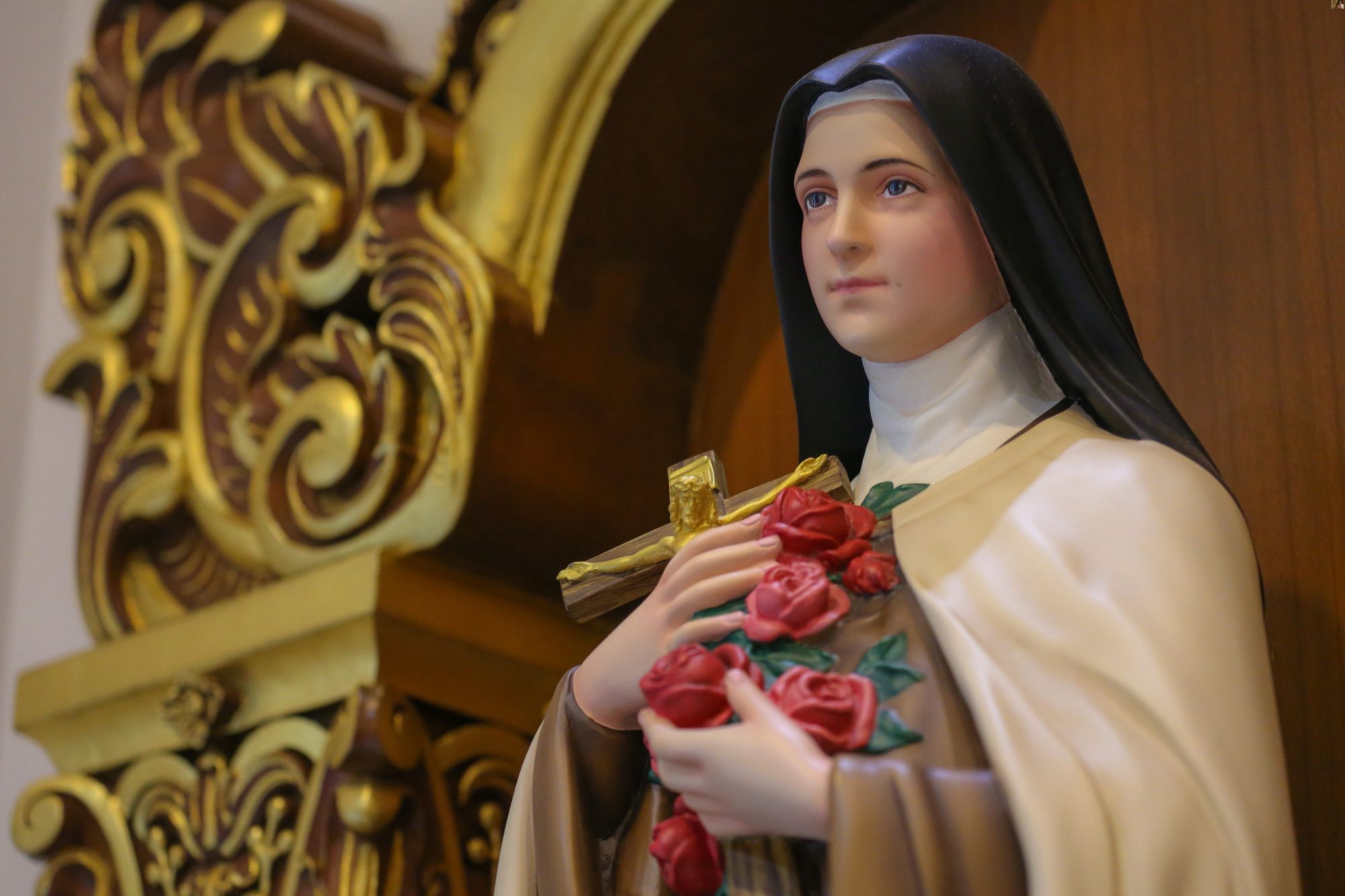
Who was St. Thérèse of Lisieux? Known as "The Little Flower," St. Thérèse of Lisieux was a French Carmelite nun who lived a short yet impactful life. Born in 1873, she entered the Carmelite convent at 15 and spent her days in prayer, simplicity, and love. Her autobiography, "Story of a Soul," has inspired millions with its message of doing small things with great love. Canonized in 1925, she became one of the most beloved saints in the Catholic Church. Her feast day, celebrated on October 1st, honors her enduring legacy of faith, humility, and devotion.
Early Life
St. Therese of Lisieux, also known as "The Little Flower," lived a short but impactful life. Her journey began in a small town in France.
- Born on January 2, 1873, in Alençon, France, Therese was the youngest of nine children.
- Only five of her siblings survived into adulthood, with four dying at a young age.
- Her parents, Louis and Zelie Martin, were canonized as saints in 2015.
Childhood and Family
Therese's early years were marked by both joy and sorrow. Her family played a significant role in shaping her spiritual life.
- Therese's mother died of breast cancer when she was just four years old.
- After her mother's death, the family moved to Lisieux to be closer to her mother's family.
- Therese was particularly close to her father, whom she called "Papa."
Spiritual Awakening
Therese's spiritual journey began at a young age. Her faith and devotion grew stronger as she matured.
- At the age of 14, she experienced a profound spiritual awakening during Christmas Eve Mass.
- She felt a calling to join the Carmelite convent, despite her young age.
- Therese's determination led her to seek permission from the Pope to enter the convent early.
Life in the Convent
Therese entered the Carmelite convent in Lisieux, where she spent the rest of her life. Her time there was marked by deep spirituality and humility.
- She entered the convent at the age of 15, after receiving special permission from the Pope.
- Therese took the religious name "Therese of the Child Jesus and the Holy Face."
- She embraced a simple and humble way of life, focusing on small acts of love and kindness.
Writings and Teachings
Therese's writings have inspired millions around the world. Her "little way" of spirituality emphasizes simplicity and trust in God.
- Her autobiography, "Story of a Soul," was published posthumously and has become a spiritual classic.
- Therese's "little way" teaches that small acts of love and sacrifice can lead to holiness.
- She believed in doing ordinary things with extraordinary love.
Illness and Death
Therese's life was cut short by illness, but her faith remained unwavering until the end.
- She contracted tuberculosis at the age of 23.
- Despite her suffering, she remained joyful and trusting in God's plan.
- Therese died on September 30, 1897, at the age of 24.
Canonization and Legacy
Therese's impact continued to grow after her death. She was canonized and became one of the most beloved saints in the Catholic Church.
- She was canonized by Pope Pius XI on May 17, 1925.
- Therese was declared a Doctor of the Church by Pope John Paul II in 1997.
- Her feast day is celebrated on October 1.
Influence and Patronage
Therese's influence extends beyond the Catholic Church. She is a patron saint for many causes and people.
- She is the patron saint of missionaries, despite never leaving the convent.
- Therese is also the patron saint of florists and gardeners.
- Many people pray to her for help with various needs, believing in her powerful intercession.
Modern-Day Relevance
Therese's teachings continue to resonate with people today. Her message of love and simplicity remains relevant in the modern world.
- Her "little way" encourages people to find holiness in everyday life, making her teachings accessible to all.
Final Glimpse at St. Therese of Lisieux
St. Therese of Lisieux, also known as the "Little Flower," left an indelible mark on the world through her simple yet profound spirituality. Her autobiography, "Story of a Soul," continues to inspire countless individuals. Despite her short life, her teachings on love, humility, and trust in God resonate deeply. Canonized in 1925, she became a Doctor of the Church in 1997, highlighting her theological impact. Her relics have traveled globally, drawing millions. St. Therese's feast day on October 1st is celebrated with great devotion. Her legacy reminds us that small acts of love and kindness can have a monumental impact. Whether you're religious or not, her life offers valuable lessons on living with purpose and compassion. Reflecting on her journey, we find a timeless example of faith and simplicity.
Was this page helpful?
Our commitment to delivering trustworthy and engaging content is at the heart of what we do. Each fact on our site is contributed by real users like you, bringing a wealth of diverse insights and information. To ensure the highest standards of accuracy and reliability, our dedicated editors meticulously review each submission. This process guarantees that the facts we share are not only fascinating but also credible. Trust in our commitment to quality and authenticity as you explore and learn with us.


